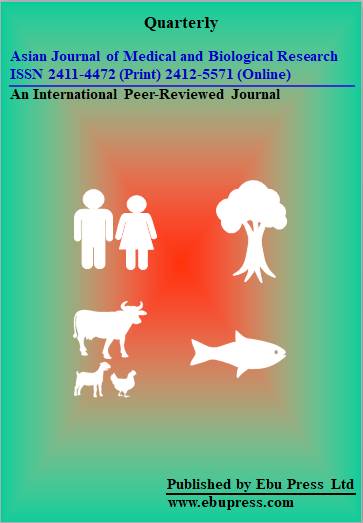Poultry farming plays a crucial role in the livestock economy of Bangladesh. This study aimed to investigate the occurrence of diseases and the commonly used drugs in poultry species in Jamalpur, Bangladesh. A total of 233 poultry cases were examined at the Jamalpur District Veterinary Hospital from September to December 2023. Diagnosis was based on a combination of clinical history, signs, and necropsy findings. Commonly used drugs for treatment purposes were also recorded, and all data were analyzed using standard statistical tools. Among broiler birds, the following diseases were identified, including Infectious Bursal Disease (IBD) (18.60%), Inclusion Body Hepatitis (IBH) (10.46%), Newcastle Disease (ND) (6%), Lymphoproliferative Disease (2.32%), Colibacillosis (13%), Salmonellosis (8.13%), Coccidiosis (11.62%), Visceral Gout (16.27%), and mixed infections (14%). In layer birds, the recorded diseases included ND (19.70%), Mycoplasmosis (13.63%), Colibacillosis (12.12%), Fowl Cholera (10.60%), Marek’s Disease (9.10%), Stroke Syndrome (7.57%), IBH (6%), Fowl Typhoid (4.54%), and mixed infections (7.57%). In Sonali chickens, ND (30%), Coccidiosis (26.26%), Mycoplasmosis (13.33%), Salmonellosis, and Colibacillosis were equally prevalent (10%). In Desi chickens, Coccidiosis (36.36%) and Ascites (9.09%) were recorded, while Duck Cholera (43.75%) and Duck Viral Hepatitis (25%) were observed in ducks. Salmonellosis was found in 40% of pigeons. Regarding age, the susceptibility to infection was as follows: broilers (above 22 days) 30.23%, Sonali (above 50 days) 33%, adult layers (19-52 weeks) 45.45%, Desi chickens (0-8 weeks) 32%, and both young and adult ducks were equally susceptible (31.25%). The most commonly used drug was ciprofloxacin (23%), followed by gentamicin (15%), sulfonamide (14%), enrofloxacin (13%), macrolides (12%), and toltrazuril (5%). Viral diseases were more prevalent in broiler and Sonali birds, while bacterial infections were common in layers and ducks. Protozoal diseases were prevalent in Desi chickens, pigeons, and turkeys. A comprehensive study is needed to identify poultry diseases based on seasonal patterns, as well as to investigate common drug efficacy and resistance patterns. This would help improve treatment protocols and raise awareness of antimicrobial resistance (AMR).



